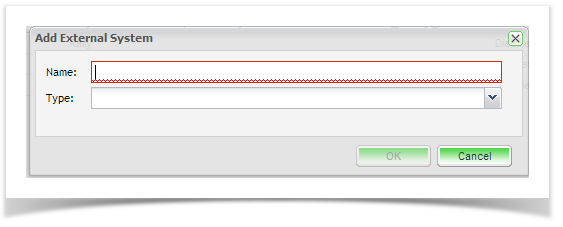To allow integration a few minutes need to be spent configuring your server and project with JIRA. Application Administration to JIRA is required to configure the JIRA Integration.
To add a connection to JIRA you first need to add an external system connection:
- Open the ‘Admin’ tab of the tree view.
- Click on Extensions and double click External Systems on the navigator.
- From the External System summary screen, you can view all existing connections and view their enabled and configuration status. Click on add from the tool bar and add a Name for your external system connection and select a connection type: Enterprise Architect, JIRA, JIRA 5+ (BETA), Rally or TFS
- The configuration screen of the external system type you chose will appear:
Field | Description |
|---|---|
| Type | Select the tracker type from the list of supported trackers. |
| Name | Enter a name for the tracker that will identify it within Enterprise Tester. |
| URL | Enter the URL path for the defect tracker. e.g. JIRA: http:///rpc/soap/jirasoapservice-v2?wsdl |
| UserName | Enter a gateway* username for the defect tracker. |
| Password | Enter the password for the gateway username. |
| Enabled? | Check this box to enable the connection to the defect tracker. |
| Ignore Invalid Remote Certificates? | Check this box to ignore invalid remote certificates. |
We recommend that the Gateway Account has JIRA administration access. This will allow creation, and update of incidents across all projects and will hold sufficient privileges to support enhanced functionality when further integration features are implemented.
When you have completed all the details click on ‘Save’.
Enterprise Tester will automatically test the tracker and will save all details if the connection is validated.
Enterprise Tester will test the external system and will save all details if the connection is validated.The next step is to set up your Enterprise Tester project configuration to your JIRA project. Please refer to the topics Synchronizing Requirements and Synchronizing Incidents.


